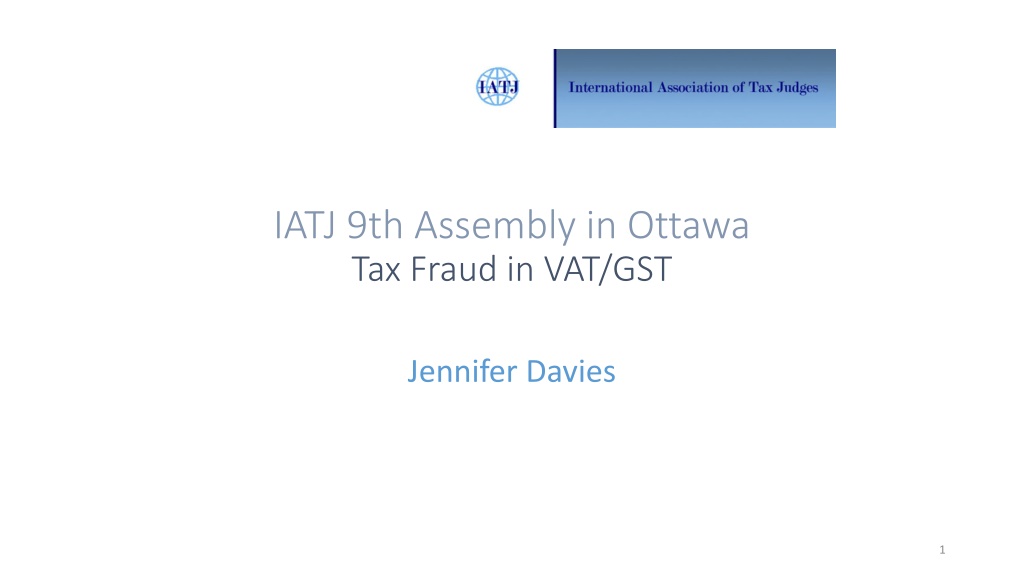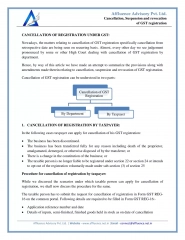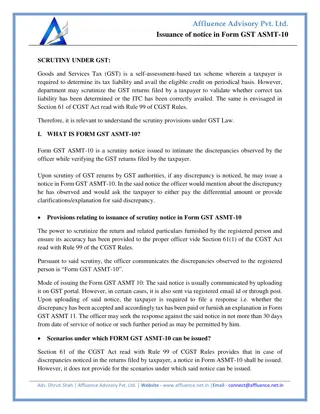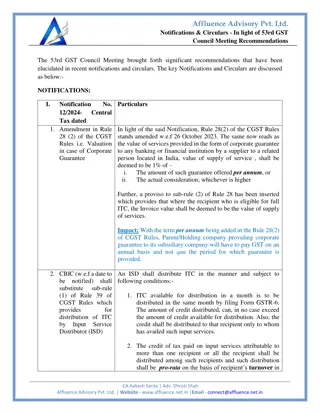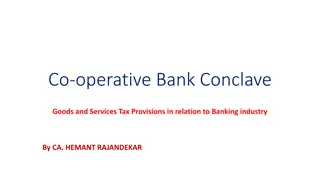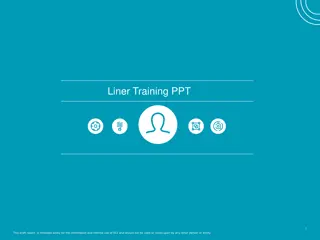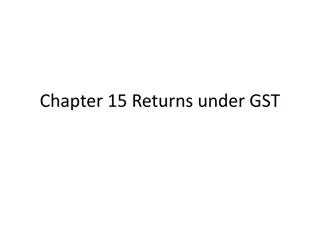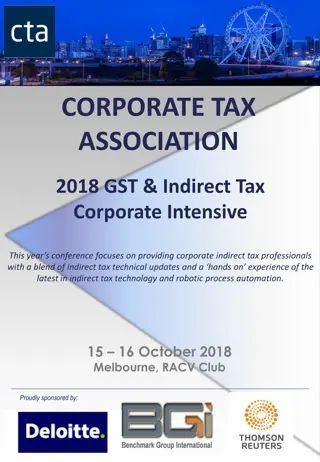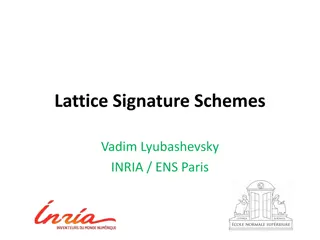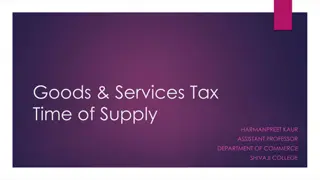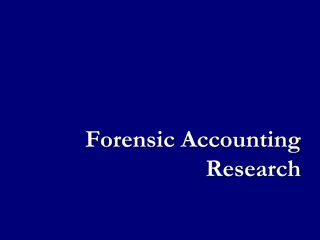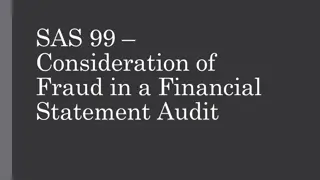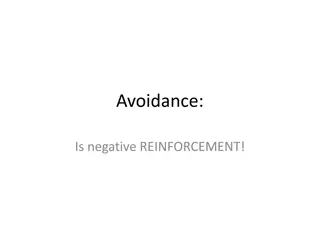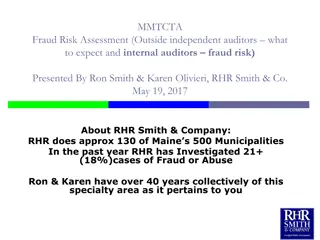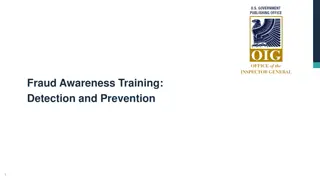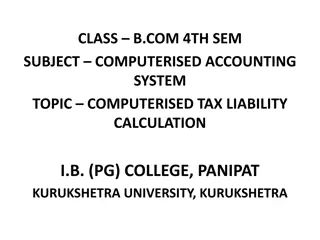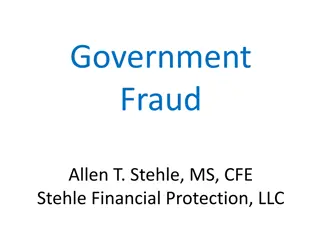Understanding GST Fraud and Avoidance Schemes
Exploring the nuances between tax fraud and tax avoidance in the context of GST, this content delves into types of GST abuse, Division 165 anti-avoidance rule, scheme structures, and consequences of GST fraud. Learn about the implications of dishonest tax practices and lawful tax conduct in the realm of GST compliance.
Download Presentation

Please find below an Image/Link to download the presentation.
The content on the website is provided AS IS for your information and personal use only. It may not be sold, licensed, or shared on other websites without obtaining consent from the author. Download presentation by click this link. If you encounter any issues during the download, it is possible that the publisher has removed the file from their server.
E N D
Presentation Transcript
IATJ 9th Assembly in Ottawa Tax Fraud in VAT/GST Jennifer Davies 1
Tax Fraud or Tax Avoidance? Tax Fraud or Tax Avoidance? Tax fraud and tax evasion involve unlawful conduct. The taxpayer has a dishonest intention not to comply with tax obligations that have arisen. For example, the taxpayer might lodge an incorrect GST refund application to obtain a refund to which they are not entitled. Tax avoidance involves lawful conduct. The taxpayer has prevented the existence of a tax liability or the creation of circumstances under which a tax liability would arise. 2
Types of Types of GST Abuse GST Abuse (i) Ineligible registration for GST and false claiming of GST credits (ii) Non-remittance of GST payable on legitimately collected GST (iii) Falsifying statements in respect of GST turnover (iv) Loophole or fraud schemes exploiting practical or technical issues within the GST system (v) GST avoidance schemes to which the provisions of the anti- avoidance rules apply 3
Division 165 Division 165 Division 165 contains a specific anti-avoidance rule directed at GST. It empowers the Commissioner to negate tax benefits obtained from a GST tax avoidance scheme. Few cases have applied the provisions to date. 4
Scheme Structure Scheme Structure REFINER TRANSACTION A GST TRANSACTION TRANSACTION B GST FREE INTERMEDIARY DEALER PRECIOUS METAL TRANSACTION C INPUT TAXED Transaction A = Taxable supply The intermediary sells non-precious metal to the refiner and charges GST. The refiner claims a GST credit for the amount paid, but the intermediary does not remit the GST to the Commissioner. Transaction B = GST free transaction The refiner turns the gold into precious metal and sells it to the dealer at a profit margin. No GST applies. Preciousmetal is defined as gold in investment form and of at least 99.95 per cent fineness. Transaction C = Input taxed transaction The dealer sells the precious metal to third parties, including intermediaries, at a profit margin and claims input tax. 5
GST Consequences GST Consequences The Commissioner: (i) pays GST credits to refiners; and (ii) does not receive GST from intermediaries, who fail to remit it. Intermediaries often send the GST amounts to third parties and then go into liquidation to avoid paying GST. 6
Legal Issues Legal Issues The scheme is the subject of a pending case where the Commissioner has applied the Div 165 anti-avoidance provisions to negate the GST benefit. Is the gold being refined within the meaning of the Act? What is the dominant purpose of the refining? 7
Factual Issues Factual Issues Did refiners receive non-precious metal or bullion? What was the quality of the gold sold to refiners? Was it scratched, or pure gold bullion in tradeable form? Has refining in fact occurred in fact: Has there been an increase in purity in fact? Expert evidence relevant. 8
Legislative Changes Legislative Changes The Treasury Laws (GST Integrity) Bill 2017 passed both houses. Main change: refiner has to remit GST itself directly to the ATO, rather than relying on intermediary to remit. This does not change the tax treatment of the product, but changes the onus of remittance. 9
Discussion Who has to carry the burden of proving that there was no fraud or evasion? The tax payer or the fiscal authorities? Solution: Change of the law in Australia with regard to the onus of remittance of VAT/GST concerning the Missing trader /Comparison to the new plans of the European Commission 10
